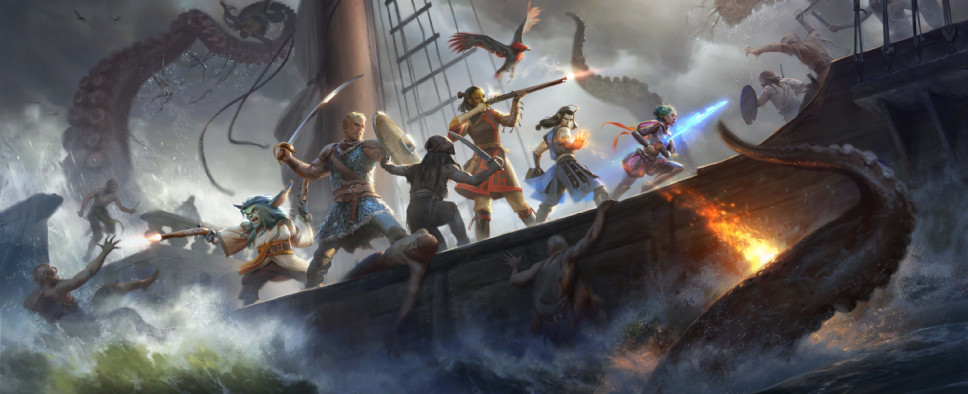Pillars of Eternity II: Deadfire Review
-
Category: ReviewsHits: 15253

Article Index
Introduction
Pillars of Eternity II: Deadfire is Obsidian Entertainment's follow-up to their 2015 role-playing game Pillars of Eternity. It takes place five years after the events of the first game, and it continues the story of the first game's characters -- although you and all of your companions have been reset back to level 1.
After a cataclysmic event at your fortress from the first game, during which you briefly lose your soul (perhaps explaining why you have to start over at level 1), a group of gods sends you to the Deadfire Archipelago to spy on the god Eothas, who is up to something again. This is basically just an excuse to have you explore a new part of the world, but it results in you meeting lots of people -- including pirates! -- who desperately need your help in solving tasks, quests, and bounties.
Characters
In some ways, the character system for Pillars of Eternity II: Deadfire looks identical to the character system from the first game. Deadfire uses the same six attributes (including dexterity, might and resolve), the same six races (including dwarf, orlan and human), the same eleven classes (including druid, paladin and wizard), and the same mix of backgrounds and cultures (which give characters a small bonus to their attributes and skills). But a lot of the details have changed.
For starters, the abilities, talents, and spells from the first game -- now just called abilities -- have been modified and rearranged, and they've been grouped together and put into a hierarchical tree for each class. This change simplifies leveling up a character, and, more importantly, makes it easier to see what is available for the character and to plan ahead since the entire tree can be seen on one page.
Also, character skills have been expanded. In Pillars of Eternity, there were only five skills, and characters were expected to know something about each one. But in Deadfire, there are 16 active and passive skills, and characters have to specialize in one or two so your party is well-rounded. Active skills (like mechanics and stealth) are used when exploring and fighting. Passive skills (like diplomacy and metaphysics) are used during conversations, where a high enough rank in a skill sometimes unlocks extra dialogue options. Characters can share their skills in some circumstances (usually in dialogue), so your main character (who does all of the talking) isn't required to know something about everything.
Finally, while previously all characters were only allowed to have one class, in Deadfire they can multi-class. Multi-classing allows characters to use the abilities from two class trees instead of just one, but they're limited to the first seven tiers (out of nine) for each tree. That means multi-class characters have more "breadth" than "depth," and they're best suited to classes where the top two ability tiers aren't much if any better than the other tiers.
The character system works pretty well. You can't learn even half of the available abilities for a character, and ditto for the skills, so you have to make choices about what you want each character to do. For example, if you have a rogue in your party, you can't just make him responsible for mechanics (trap and lock springing), sleight of hand (pickpocketing), and stealth. If he tries to learn all three, then he won't be good enough in any of them. So you have to parcel out the skills, or perhaps decide which ones you don't really care about.


